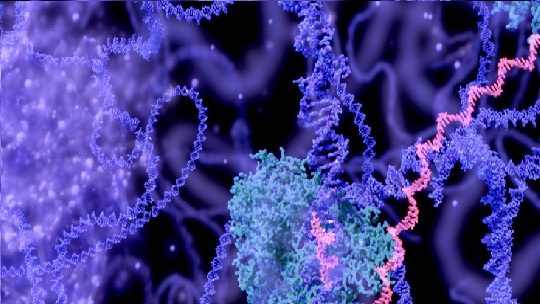
Research and Development (R&D) initiatives in genetic engineering sector during last two decades have led to the emergence of a new generation gene editing (GE) technology, “Clustered Regularly Interspaced Short Palindromic Repeats (CRISPR) along with nucleases”.
CRISPR is a natural defense system unique to bacteria and archaea that aids in resisting invasion of viruses or exogenous plasmids.
CRISPR-Cas systems can be classified into 2 classes (Class 1 and Class 2), 6 types (I to VI) and several subtypes, with multi-Cas protein effector complexes in Class 1 systems (Type I, III, and IV) and a single effector protein in Class 2 systems (Type II, V, and VI).
The CRISPR system consists of two critical modules, including gRNA (comprised of CRISPR RNA (crRNA) and a constant trans-activating crRNA (tracrRNA)) and single DNA endonuclease, Cas9.
The emergence of synthetic single-guide RNA (sgRNA) made a giant leap forward in genome editing. sgRNA can direct Cas9 to generate site-specific double-stranded DNA breaks (DSBs) in any protospacer-adjacent motif (PAM)-containing targeted genomic locus depend on a base pairing that can be repaired by non-homologous end-joining (NHEJ) or homology-directed repair (HDR) mechanisms. Lately, catalytically-dead Cas9 (dCas9), RuvCD10A and HNHH840A, protein has been repurposed into CRISPR interference (CRISPRi) and CRISPR activation (CRISPRa) systems, for targeted gene silencing and activation in an RNA-guided way. In addition, it has been revealed that development of nickase, which can only cleave one strand instead of two strands of desired target DNA, can be valuable for genome editing.
Despite considerable therapeutic agreement of the carrier-free CRISPR/Cas technology, there are several disputes that are impeding their practical applications. To discourse these problems, there is a critical need to develop innovative delivery designs. Physical strategies (electroporation, microinjection, induced transduction by osmocytosis and propanebetaine (iTOP), hydrodynamic injection, mechanical cell deformation, etc.), viral vectors (adeno-associated virus (AAV), lentivirus, adenovirus (Ad), etc.), and nanocarriers are the most commonly used delivery strategies.
The emergence of CRISPR/Cas gene editing technology provides new possibilities for human gene editing. With rapid development in recent years, it has been widely applied in many fields, especially in the fields of genetic disease treatment, disease-related gene screening and detection, tumor treatment, transformation of plants and animals, and prevention and control of pathogenic microorganisms, which have great potential and can effectively improve the quality of life of humans. However, CRISPR/Cas gene-editing technology is currently facing a series of difficulties, including but not limited to limited funding, ethical concerns, and cancer risk. To better understand the potential risks and benefits of CRISPR/Cas gene-editing, researchers will need to study this technology rigorously.
At present, there are three mainstream genome editing tools in the world, zinc finger nucleases (ZFNs), transcription activator-like effector nucleases (TALENs) and the RNA-guided CRISPR (clustered regularly interspaced short palindromic repeats)-Cas (CRISPR-associated) nucleases systems. Compared to other GE tools, the CRISPR/Cas method of targeted gene editing is simpler, faster and less expensive as a single vector can be redesigned multiple times to insert various genes.
Applications of CRISPR-Cas systems in human disease research
– establishing animal and cell models of human diseases
– disease diagnosis
– genome-scale screening
– gene therapy






